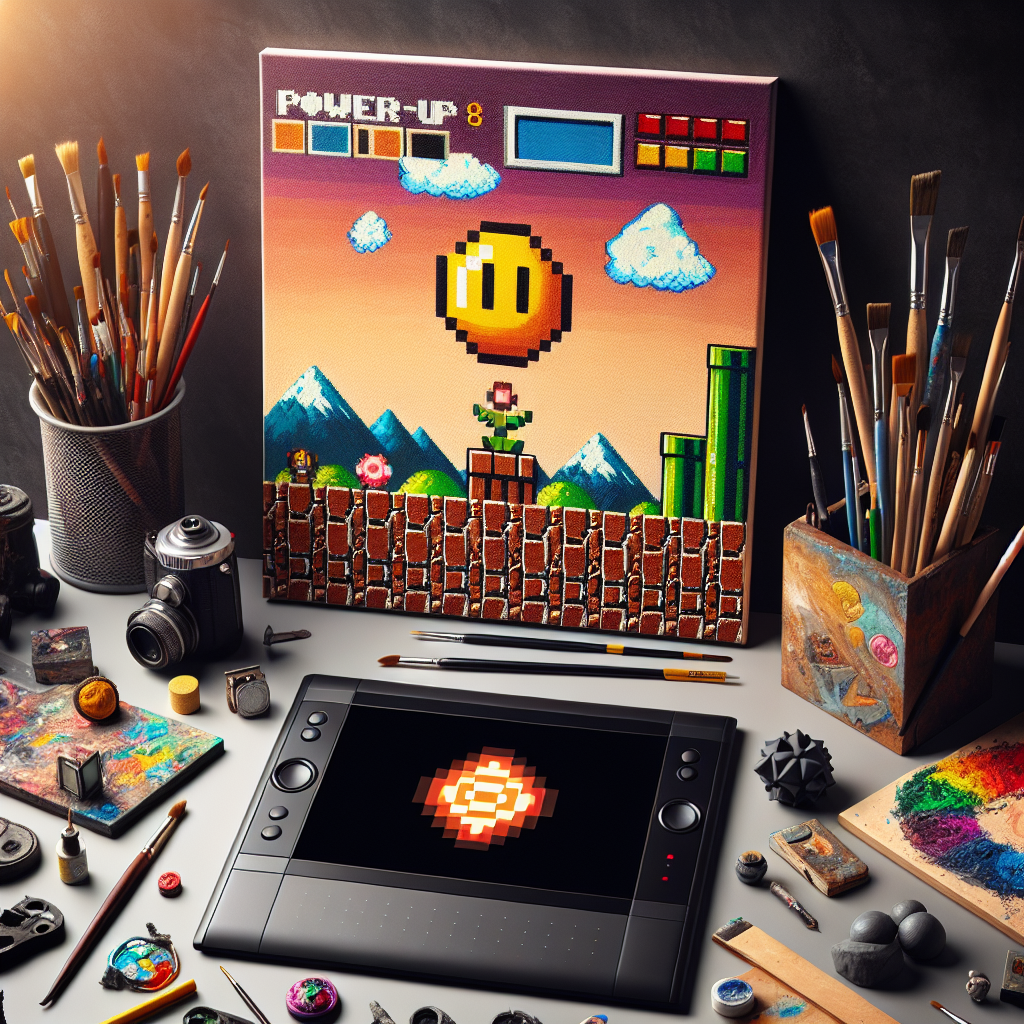Artistic Power-Ups: Experimenting with Different Mediums for Game-Inspired Art
In the ever-evolving landscape of art, inspiration can strike from the most unexpected places. For many artists, the world of video games offers a rich tapestry of narratives, characters, and aesthetics that inspire creativity. Just as game characters collect power-ups to enhance their abilities, artists can gain their own “artistic power-ups” by experimenting with different mediums to create distinctive, game-inspired art. In this article, we will explore how artists can effectively utilize various mediums to elevate their work, drawing upon themes, styles, and mechanics from the gaming universe.
Unlocking the Potential of Mixed Media
One of the most exciting ways to infuse game-inspired elements into art is through mixed media. Combining traditional and digital techniques can create an immersive experience for the viewer. For instance, starting with traditional sketching or painting can provide the foundational aesthetic, while digital overlays can add texture, depth, and even animation to the piece. Imagine a character design done in watercolors, then enhanced digitally with glowing effects—much like a power-up in a game.
Artists can also incorporate physical objects into their work, such as crafting three-dimensional elements or using found objects, reminiscent of crafting mechanics in survival or simulation games. This not only provides a tactile quality but also invites viewers to engage with the art on multiple levels, transforming a simple piece into a comprehensive experience.
Exploring the Depths of Digital Art
Digital art is inherently tied to video games, forming the backbone of many visual narratives. Artists looking to channel their love for gaming into their work can utilize software like Photoshop, Illustrator, or Procreate to create intricate designs that echo the worlds and characters they admire. Experimentation with digital brushes, textures, and layering techniques can mimic the graphic styles of various games, from pixel art reminiscent of retro classics to hyper-realistic renderings found in modern titles.
The use of animation is another powerful tool in a digital artist’s repertoire. Short animations or GIFs inspired by games can create dynamic visuals that captivate an audience. For example, animating a character in a signature “power-up” pose or creating a looping scene that mimics gameplay can bring a fresh perspective to artwork, blurring the lines between static and interactive media.
Going 3D: Sculpting Game Characters
Sculpting and 3D modeling provide exciting avenues for artists to engage with the physical form of their inspirations. Programs like Blender or ZBrush allow artists to create digital sculptures of their favorite game characters, while traditional sculpting with clay or mixed media can yield stunning results that bring characters to life. 3D sculptures can serve as a homage to beloved games or reinterpretations that forge new narratives.
Incorporating 3D printing technology opens even more doors, enabling artists to manifest their designs into tangible pieces. From miniature models of iconic locations to lifelike representations of game heroes, the possibilities are endless. The tactile experience of holding a designed piece can be a powerful encounter for both artist and viewer, adding a new layer of appreciation for the artistic process.
The Narrative Aspect: Storytelling Through Art
Just as games often revolve around compelling narratives, artists can harness storytelling in their creations. A series of illustrations that depict a character’s journey or an environment’s evolution can engage viewers in an interactive experience. Utilizing comic styles or graphic novel formats can allow artists to convey complex narratives akin to video game storytelling.
Integrating elements such as dialogue bubbles, story arcs, or interactive storytelling—where viewers are encouraged to explore different paths through the art—can deepen engagement. This narrative approach aligns with the immersive storytelling found in many games, transforming the artwork into an experience rather than a mere visual representation.
Community Engagement and Collaboration
Collaboration is a key component of many gaming experiences, whether through co-op gameplay or player-generated content. Artists can embrace this collaborative spirit by participating in art challenges, game jams, or community events that encourage the fusion of art and games. Platforms like Discord, social media, and art forums provide spaces to share ideas, receive feedback, and explore different mediums collectively.
Collaborative projects, such as mural paintings inspired by local gaming culture or group exhibitions, foster a sense of community that parallels the cooperative nature of multiplayer games. By joining forces with other artists, new techniques, and fresh inspirations emerge, leading to the creation of innovative works that celebrate both art and gaming.
Conclusion: Leveling Up Artistic Expression
Experimenting with various mediums allows artists to unlock their creative potential, much like a character in a game unlocking new abilities. By drawing inspiration from the vibrant world of video games, artists can explore a wide range of techniques and materials to express their passions in intricate and engaging ways. Whether through mixed media, digital artistry, sculpture, or narrative exploration, the intersection of art and gaming fosters a rich environment for growth and innovation.
In embracing the artistic power-up philosophy, artists not only elevate their craft but also contribute to a broader dialogue about creativity in the modern world. As this dialogue continues to unfold, the landscape of game-inspired art will undoubtedly thrive, paving the way for future generations of artists to embark on their quests for artistic expression. So pick up your brush, open that software, or mold your clay—your artistic journey awaits!




